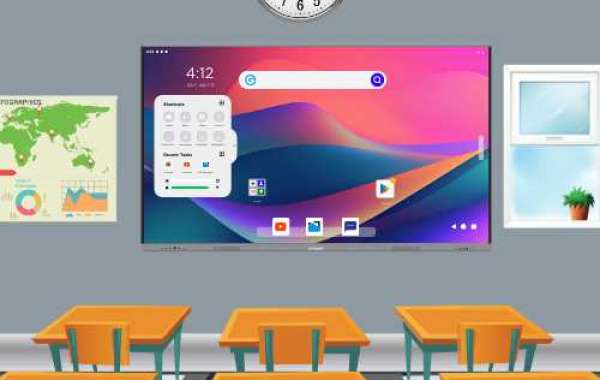In the ever-evolving landscape of education and business, technological advancements continue to play a pivotal role in enhancing engagement, collaboration, and overall efficiency. One such innovation that has gained widespread popularity is the Interactive Flat Panel Display (IFPD). Originally designed for classrooms, these interactive displays have seamlessly extended their utility to the business world, transforming the way information is presented and shared. In this article, we delve into the multifaceted benefits of IFPDs in education and business, exploring how these cutting-edge displays are reshaping traditional modes of learning and collaboration.
Interactive Learning Spaces in Education:
Interactive flat panel displays have become a cornerstone in modern educational settings, replacing traditional whiteboards and projectors. These high-tech displays combine the functionality of a touch screen with the versatility of interactive software, creating a dynamic learning environment that captivates students' attention.
1. Engagement and Interactivity:
One of the primary advantages of IFPDs in education is their ability to foster engagement and interactivity. Students are no longer passive observers; instead, they actively participate in the learning process. Teachers can create interactive lessons, allowing students to manipulate content directly on the display. This hands-on approach not only caters to various learning styles but also makes complex concepts more accessible.
2. Collaborative Learning:
IFPDs promote collaborative learning experiences by facilitating group activities and projects. Multiple students can interact with the display simultaneously, encouraging teamwork and communication. This collaborative aspect mirrors the real-world work environment, preparing students for the challenges of the future.
3. Multimedia Integration:
Gone are the days of static textbooks and monotonous lectures. IFPDs enable multimedia integration, allowing teachers to incorporate videos, simulations, and interactive applications into their lessons. This multimedia-rich environment not only enhances understanding but also makes learning more enjoyable and memorable.
Transforming Boardrooms into Innovation Hubs:
Beyond the classroom, IFPDs have found a significant place in the corporate world, revolutionizing the way businesses conduct presentations, meetings, and collaborative sessions.
1. Dynamic Presentations:
In the business realm, presentations are a cornerstone of communication. IFPDs bring a new dimension to presentations by allowing presenters to interact directly with the content. Whether annotating graphs, highlighting key points, or incorporating live data, these displays make presentations more dynamic and engaging.
2. Efficient Collaboration:
In a globalized business landscape, collaboration is paramount. IFPDs facilitate seamless collaboration by enabling team members to contribute and edit content in real-time. Video conferencing, document sharing, and collaborative brainstorming sessions become more efficient and productive.
3. Streamlined Workflow:
With IFPDs, the need for traditional tools such as flip charts and whiteboards diminishes. Everything from ideation to finalizing strategies can be done on the interactive display. This streamlines workflow, reduces clutter, and enhances overall efficiency in decision-making processes.
The Technological Backbone:
The success of IFPDs lies in their advanced technological features. These displays often come equipped with 4K resolution, multi-touch capabilities, and intuitive interfaces. Additionally, many IFPDs are compatible with a variety of software applications, further expanding their functionality.
1. Touch Technology:
The touch-sensitive nature of IFPDs eliminates the need for additional peripherals such as a mouse or keyboard. This not only simplifies the user experience but also encourages a more natural and intuitive interaction with the content.
2. Connectivity:
IFPDs are designed to seamlessly integrate with other devices and platforms. Whether wirelessly connecting laptops, tablets, or smartphones, these displays facilitate a smooth flow of information, making them an ideal tool for both educators and business professionals.
3. Accessibility and Inclusivity:
IFPDs contribute to creating inclusive learning and working environments. The ability to zoom in on content, change text sizes, and use assistive technologies makes these displays accessible to individuals with diverse needs, promoting equality in education and the workplace.
Conclusion:
Interactive flat panel displays have emerged as transformative tools in both education and business, enhancing engagement, collaboration, and overall productivity. As technology continues to advance, the integration of IFPDs is likely to become more ubiquitous, reshaping traditional modes of learning and communication. The journey from static presentations and passive learning to dynamic, interactive experiences marks a significant leap forward, ushering in an era where the power of information is truly at our fingertips. Whether in the classroom or the boardroom, the impact of IFPDs is undeniable, making them an indispensable asset in the quest for more effective and engaging communication.














